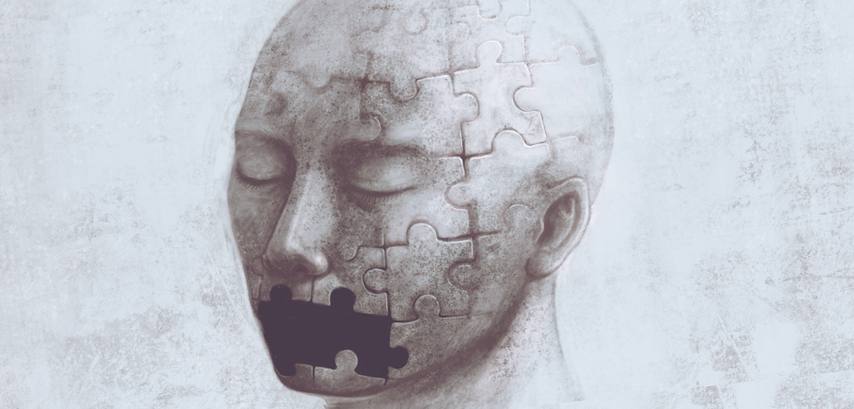McCarthyism — the infamous anti-communist witch hunt of the 1950s — is thought of as a dark chapter in American history, where accusations alone could destroy careers, reputations, and entire artistic movements. Figures such as screenwriter Dalton Trumbo, playwright Lillian Hellman, and actor John Garfield saw their careers derailed, with many blacklisted from the industry. That frightening era is upon us again with elements of the pro-Israel lobby and governments working over weak cultural institutions such as Creative Australia to ban artists.
The war in Gaza has, since it began in October 2023, become a crucible for Australia’s cultural sector, exposing fault lines in our pre-eminent institutions. Where these organisations once confidently championed liberal causes like Marriage Equality and the Voice to Parliament, secure in the knowledge that their stakeholder base broadly supported such positions, the Gaza conflict has forced a more revealing choice. Caught between pro-Israel stakeholders (often significant philanthropic donors) and the groundswell of artists and audiences expressing solidarity with Palestine, these institutions have chosen the path of suppression rather than dialogue. This is what happened in the era of the Wisconsin senator, Joe McCarthy.
This new form of McCarthyism has surfaced within our most prestigious cultural bodies – the National Gallery of Australia, the Melbourne Symphony Orchestra, the Sydney Theatre Company, and, most recently, Creative Australia itself, the arm’s-length government body charged with overseeing funding for them all. These organisations stand at the apex of our nation’s artistic and cultural life, and by virtue of their public funding, have a mandated responsibility to generate public value – a complex, contextual and often elusive combination of symbolic representation, cultural enrichment, and measurable social and economic benefits. Yet, instead of fulfilling this mandate, they have adopted a pattern of pre-emptive self-censorship, driven by political pressure and the chilling effect of reputational risk. Call it for what it is – Cultural McCarthyism.
The implications are stark: while these institutions frame their actions as risk management or crisis control, the underlying reality is far more troubling. What masquerades as public relations strategy reveals a darker pattern of institutional capitulation – whether to pressure from specific interest groups or fears of losing philanthropic funding. This culture of acquiescence betrays a profound failure of leadership: an unwillingness to engage with challenging issues and a lack of moral courage at the highest levels.
The result? Knee-jerk decisions — such as the recent removal of Lebanese-Australian artist Khaled Sabsabi and curator Michael Dagostino from the Venice Biennale, the cancellation last year of acclaimed pianist Jayson Gillham’s MSO performance, or last week’s chilling physical concealment of Palestinian flags in Pacific artist Rosanna Raymond’s tapestry at the NGA — that, ironically, inflict far greater damage to these institutions’ integrity and credibility than the perceived risks they so desperately seek to avoid. The question is no longer whether censorship is occurring – it is whether there remains any institutional backbone to resist it. Let’s take a look at some of these examples of Cultural McCarthyism.
The National Gallery’s act of erasure
The National Gallery of Australia’s recent decision to cover Palestinian flags in a tapestry at the Te Paepae Aora’i – Where the Gods Cannot Be Fooled exhibition is a textbook case of Cultural McCarthyism. The tapestry, curated by Rosanna Raymond and created by the SaVĀge K’lub collective, features flags symbolising struggles for justice – West Papua, Torres Strait Islanders, and Aboriginal Australia among them. The decision to censor only the Palestinian flag speaks volumes. The NGA justified its action by citing a “security risk”, yet failed to provide specifics, raising the question of whether the real motivation was institutional self-preservation in the face of potential controversy – or some other unspecified fear? This, remarkably, from the Gallery itself. Why doesn’t the board and management of the NGA level with the community and state what is obvious – it got harassed by one of the most effective lobby groups in Australia, the political Zionist movement, and succumbed to its, and no doubt Albanese Government pressure.
In a climate of decolonisation — a principle that sits at the heart of our national cultural policy Revive and its heavily promoted ‘First Nations First‘ mandate, one that cultural institutions have rushed to embed in their strategic plans and promotional materials — the NGA’s decision to compromise, reshape and literally cover up a work by an Indigenous artist is particularly egregious. That this censorship occurred within a national gallery, a deeply colonial institution, and involved forcing an Indigenous artist to accept either censorship or exclusion, makes an absolute mockery of the decolonial values they claim to champion.
As Raymond herself put it, the decision was “absolutely horrifying”. The NGA itself acknowledged that it placed artists “in a difficult position.”
The Venice Biennale debacle: A chilling warning to artists
Earlier last week Creative Australia’s rescinding of Lebanese-Australian artist Khaled Sabsabi and curator Michael Dagostino’s appointment for the 2026 Venice Biennale provided another high-profile and shocking example of this tool of Cultural McCarthyism, the cultural purge. Initially selected through a rigorous process, their removal came after a campaign of political and media pressure — most notably from right-leaning, Murdoch-owned The Australian newspaper and the shadow arts minister. The ostensible reason? Sabsabi’s 2007 video work You, which features manipulated images of Hezbollah leader Hassan Nasrallah in a way that deliberately ambiguously complicates, rather than glorifies, his image, as was suggested in pointed questioning in parliament from Senator Claire Chandler.
As Ben Eltham and Catriona Menzies-Pike noted in Crikey, it took just one question in the Senate to topple this house of cards. The decision wasn’t about an honest curatorial reassessment, but a knee-jerk reaction to external political pressure. “If conservative media is going to dictate cultural policy,” the authors wrote, “Australian culture will face a reckoning.”
Beyond the specific case of Sabsabi, this incident underscores the precarious position of artists working in politically charged spaces. The message from Creative Australia’s leadership is clear: if your work touches on contested histories or identities — particularly anything that could be construed as pro-Palestinian — you are at risk. The arm’s-length principle — the idea that cultural funding bodies operate independently of government interference — is now little more than an illusion.
Significantly, this decision sparked unprecedented internal revolt. In a remarkable display of staff resistance, over 100 Creative Australia employees confronted CEO Adrian Collette and chair, Robert Morgan in a two-hour meeting. Staff directly challenged their leadership positions and questioned their fitness to lead Australia’s principal arts investment and advisory body. This internal uprising — rare in the typically reserved cultural sector — demonstrates that many within these institutions recognise the dangerous precedent being set and are willing to resist it.
The future of cultural freedom: A defining moment for Australia
McCarthyism was a catastrophic moment in American history – one that saw careers ruined, public discourse poisoned, and artistic integrity crushed under the weight of ideological policing. It took decades for American cultural institutions to recover from the damage, and even now, the scars remain. We do not need, nor should we accept, such a chapter in Australia’s history.
This is not simply about political correctness, nor is it about avoiding offence or placating influential pressure groups. It is about the fundamental role of cultural institutions in a democratic society. Do we want our galleries, theatres, and literary spaces to be places where ideas can be debated, where difficult conversations can occur, and where art challenges power? Or do we want them to become echo chambers for the safest, most anodyne expressions of culture or where the strongest political force rules – spaces where artists and curators self-censor before a single word is spoken or a single image is seen?
Australia’s cultural institutions are at a crossroads. Will they succumb to external pressure, silencing voices that challenge prevailing orthodoxies? Or will they reaffirm their commitment to creative freedom, intellectual integrity, and artistic courage? The choices they make now will define the cultural landscape of this country for years to come.
Cultural McCarthyism in Australia is not theoretical – it is happening in real time, and it is suffocating the very institutions meant to champion creative freedom. The only way forward is to resist, vocally and unapologetically. Otherwise, the cultural landscape of this country will be dictated not by artists and audiences, but by those who seek to control the boundaries of acceptable thought.

